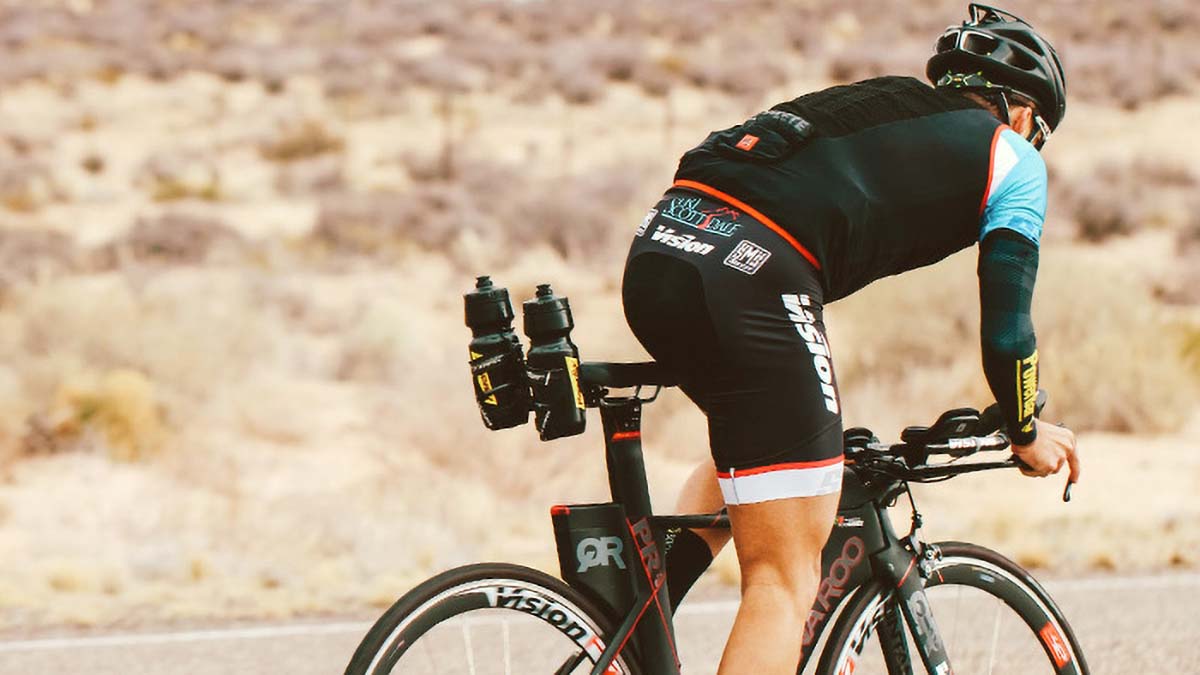Warm sun on bare skin not only feels good, but also allows the human body to produce Vitamin D, a secosteroid hormone that is created in the skin after exposure to UVB radiation. Vitamin D has been extensively researched and shown to be important for bone health, muscle growth, recovery, and immune function. It has also been correlated with lower blood pressure, heart health, and even emotional well-being. Athletes interested in maximizing their performance should consider that while some of the data is inconclusive, there is a lot of evidence showing Vitamin D positively influences performance.
About 80-90% of Vitamin D needs are met by UVB exposure, and only 10-20% comes from dietary sources. Since most working adults spend most of the daylight hours indoors, it’s no surprise that Vitamin D deficiency is extremely common. By some estimates, up to 80% of the world’s population is lacking. As one study states, “…Vitamin D deficiency is becoming an epidemic across the USA, even among groups that were not previously labeled as “at-risk.”
Athletes should take note: even very recent studies suggest deficiency can affect muscle function and strength along with negative impacts on bone health and healing.
Vitamin D Deficiency: Are You at Risk?
It may be surprising to learn that not all sunny times of the day are equal. Your skin requires exposure to UVB rays in order to produce Vitamin D, which are only present when the sun reaches 35 degrees (aka, solar noon). For individuals living above north latitude 35 degrees, the sun literally does not reach the necessary angle for UVB penetration for all of the winter months, meaning zero opportunity for D production. And even during peak times, wearing sunscreen or skin-covering clothing can prevent production.
Furthermore, an individual’s physical characteristics including darker skin tones, higher body fat, and age (over 50) can also lead to slower Vitamin D production and risk of deficiency. Athletes who train predominantly indoors or during off-peak hours are at risk. Exercise itself does not promote Vitamin D production.
What is Considered Vitamin D Deficiency?
The USA requirement is 600 IU/day, but studies conducted on the athlete population suggest that is not enough for activation of the immune system. In line with the latest guidelines, the normal ranges for serum 25(OH)D levels in the blood are defined as 30–50 ng/mL or 40–60 ng/mL. Vitamin D insufficiency is defined as serum levels of 20–30 ng/mL, and Vitamin D deficiency as serum levels below 20 ng/mL.
Unlike many other vitamins that you track by monitoring your diet, Vitamin D is a mystery unless a blood test is administered. If you suspect you have a deficiency, talk to a doctor. You can also check out online tests like Everlywell or InsideTracker.
How to Prevent Deficiency
Monitor Via Aps
One really cool app released in 2017 is called dminder. It tracks your Vitamin D based on individual skin tone, age, weight, and amount of skin exposed. You can enter supplements, and the app will use your location and current time to help coordinate the best time to maximize UVB rays and prevent sunburn. The data is saved and calculated, so at a glance, you know if needs are being met.
As mentioned before, apps such as Everlywell and InsideTracker are also great tools to measure Vitamin D levels in your blood.
Eat Vitamin D-Rich Foods
Don’t forget that most people only get about 10-20% of the required Vitamin D intake through diet. Check labels – most cereals, orange juice, and plant milks are fortified with enough Vitamin D to meet your needs. Tofu is another nutrient-dense option. Mushrooms, especially those that have spent time in UV light from the sun or a lamp, are high in Vitamin D. Finally, if you live where fresh, sustainable seafood is available, most of it qualifies as a good source of Vitamin D.
Take Supplements
You can also consider a supplement, but you should always chat with your doctor before taking supplements. Tara Pelletier, a primary care physician in the northeast, told me it is very unusual to overdose on Vitamin D. Her only experience was someone taking fish oil and high doses of Vitamin D supplements at the same time. “If you live in the sun-sparse northern hemisphere, taking a dose 2000-4000 iu/d is worth trying from November to March.”
Because Vitamin D is predominantly created by UVB rays from the sun, a lot of the population is deficient due to sunscreen use, time indoors, or geographical location. Research on the vital role Vitamin D plays in our bodies is ongoing, but the risk of side effects from supplements is low. With potential benefits to the immune system and muscle repair due to the presence of this vitamin, it’s wise for athletes to explore their own intake or production through the use of sun, supplements, diet, and medical consultation.
References
Anna, K., et al. (2019, August). Vitamin D, Skeletal Muscle Function and Athletic Performance in Athletes—A Narrative Review. Retrieved from https://www.ncbi.nlm.nih.gov/pmc/articles/PMC6722905/#B12-nutrients-11-01800
Parva, N., et al. (2018, June). Prevalence of Vitamin D Deficiency and Associated Risk Factors in the US Population (2011-2012). Retrieved from https://www.ncbi.nlm.nih.gov/pmc/articles/PMC6075634/








